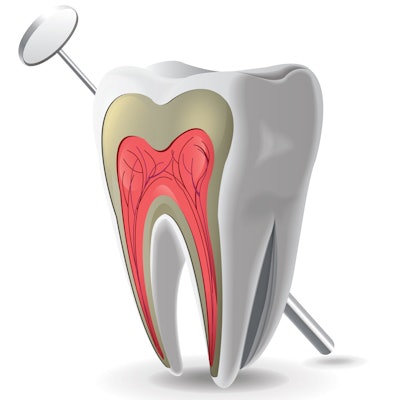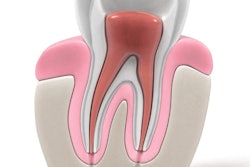
Major advancements have been made in nickel titanium (NiTi) rotary instruments in recent years. But which type of rotary instrumentation works best? In a study in BMC Oral Health, researchers tested three types of NiTi instruments for shaping root canals, finding one that was superior.
A group from China used microcomputed tomography (micro-CT) and found that a NiTi rotary instrument with a reciprocating design was best in terms of root canal volume change and reduced practitioner canal preparation time in a study published online in BMC Oral Health (January 9, 2017).
"The combination of [micro-CT] and simulated canals provided a method for the evaluation of the shaping properties of NiTi rotary instruments," wrote the team, led by Zhao Wei of the department of endodontics at the School and Hospital of Stomatology at Wuhan University.
Comparison of 3
A successful root canal treatment depends on the shaping and debridement of the root canal system, so finding the most effective rotary instrument to get the job done in the least amount of time is crucial. While many endodontists use stainless steel instruments, NiTi rotary instruments are considered to be more effective at shaping and canal debridement than stainless steel files, the study authors wrote.
But is there a particular type of NiTi rotary instrument that's more effective at shaping, canal debridement, and preparation time? The group put three commercially available systems through their paces, analyzing their performing in simulated root canals using micro-CT. The systems were as follows:
- ProTaper Universal (PTU) system (Dentsply Sirona), which has a convex cross-sectional design with a shallow U-shaped groove in each convex triangular edge
- Reciproc single-file system (VDW), which has an S-shaped cross-section design and noncutting tip, with a single file that works in a reciprocating motion
- K3XF rotary system (Kerr Dental), which has an updated alloy design compared with the previous K3 system, with mechanical properties modified by special heat treatment of the alloy during manufacturing
“Reciproc showed enhanced apical volume changes, and K3XF exhibited better centering ability when compared with other groups.”
"The differences in the metallurgy and design of these modified NiTi instruments may produce different shaping abilities, and clinicians are often confused about which is better for an individual case to produce more centered preparations and minimize apical root canal transportation," the authors wrote.
To test the devices, the researchers created 30 simulated root canals with a single curvature in a clear resin block (Endo Training Bloc, Maillefer). The canals had a 16.5-mm canal length, a 60° curvature (4.5-mm radius), and a 10-mm straight section before the curve. The researchers randomly assigned the blocks to one of three groups (n = 10 per group).
The simulated canals were scanned with micro-CT before and after instrument use. The researchers evaluated canal transportation, volumetric change, centering ability, instrument failure, and preparation time for each group.
All canals were reconstructed successfully, the authors reported. The single-file system (Reciproc) produced greater volume change in the apical third of the canal compared with the two rotary systems (see table below). The smallest mean increase was seen when using the K3XF rotary system, they noted. Enlarging the apical area allows better reduction of the amount of microorganisms in complex root canals.
| Performance of rotary files as measure by volume change (mm3) | |||
| Location | PTU (n = 10) | Reciproc (n = 10) | K3XF (n = 10) |
| Apical third | 0.15 ± 0.03 | 0.21 ± 0.05 | 0.09 ± 0.01 |
| Middle third | 0.36 ± 0.03 | 0.38 ± 0.04 | 0.24 ± 0.04 |
| Coronal third | 0.40 ± 0.07 | 0.42 ± 0.05 | 0.32 ± 0.09 |
However, the K3XF rotary system exhibited better centering values at 1 mm, 2 mm, 3 mm, and 5 mm depths from the apex, according to the study authors. The preparation time for the Reciproc was significantly faster than the other two systems, they noted. But they pointed out that this is the result of Reciproc being a single-file system that requires less instrumentation time.
Resin and dentin
The authors reported that the difference between the hardness of resin and the hardness of dentin was a drawback when using rotary instruments. They also noted that the heat generated by the instrument may distort the canal while reducing cutting efficiency and possibly leading to the instrument becoming separated.
While stopping short of endorsing any of the instruments, the authors concluded that there was a difference between the three systems.
"Reciproc showed enhanced apical volume changes, and K3XF exhibited better centering ability when compared with other groups," the authors concluded.



















